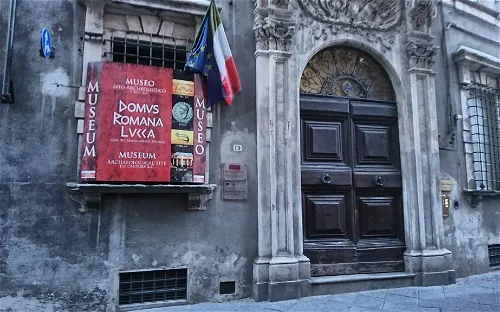Domus Romana Lucca and its collection
The Domus Romana Lucca – Casa del Fanciullo sul Delfino is an archaeological site with an attached museum located in the heart of Lucca. This site was accidentally discovered during some renovation works in the historic center, in the basement of Palazzo Orsucci in the early 2010s. It is the first and only archaeological site in Europe to be unearthed and opened to the public with purely private funds.
Main Exhibits at Domus Romana Lucca
One of the main exhibits at the Domus Romana Lucca is a wall that clearly shows the Roman, Medieval, and Renaissance influences. This unique feature allows visitors to observe the evolution of building styles used in different eras in a single environment.
Terracotta Frieze at Domus Romana Lucca
Another significant find at the Domus Romana Lucca is a terracotta frieze, from which the Domus gets its name. The frieze depicts two boys riding dolphins on either side of a gorgon's head, which the children are holding by the hair. This frieze symbolizes the victory of good over evil and is believed to date back to 56 BC. Such works were generally placed in correspondence with major events, and that year, ancient Lucca hosted the First Triumvirate, which included the great Julius Caesar.
History & Anthropology Archaeology Medieval art & Early Renaissance art Renaissance art & Early modern art





